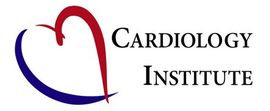Central Auckland, East Auckland, North Auckland, South Auckland, West Auckland > Private Hospitals & Specialists >
Cardiology Institute
Private Service, Cardiology
Echocardiogram and Stress Echocardiography
Echocardiography is also referred to as cardiac ultrasound. This test is performed by a specially trained technician, and interpreted by expert imaging cardiologists. It is a test that uses high frequency sound waves to generate pictures of your heart. During the test, you generally lie on your back; gel is applied to your skin to increase the conductivity of the ultrasound waves. The test is painless and usually takes 30 minutes.
The machine then analyses the information and develops images of your heart. These images are seen on a monitor. This is referred to as an echocardiogram.
Echocardiography can help in the diagnosis of many heart problems including cardiovascular disease, previous heart attacks, valve disorders, weakened heart muscle, holes between heart chambers, fluid around the heart (pericardial effusion).
If doctors are looking for evidence of coronary artery disease, we may combine the ultrasound with some stress testing:
- Exercise stress echocardiography - a technique used to view how your heart works under stress. It compares how your heart works when stressed by exercise versus when it is at rest. The ultrasound is conducted before you exercise and immediately after you stop. Usually, a standard treadmill is used.
- Dobutamine stress echocardiography - if you are unable to exercise for the above test, you might be given medications to simulate the effects of exercise. During this test, an echocardiogram initially is performed when you’re at rest. Then dobutamine is given to you via a needle into a vein in your arm. Its effect is to make your heart work harder and faster just like with exercise. After it has taken effect, the echocardiogram is repeated. The effect wears off very quickly.
Click here for more information.
Was this page helpful?
This page was last updated at 4:28PM on September 14, 2023.

